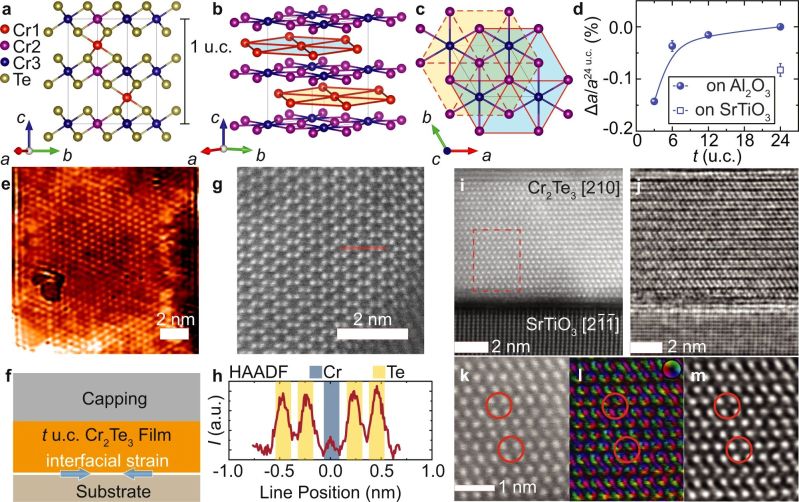Chromium(III) Telluride (Cr2Te3) is an interesting material for (ferro)magnetic applications, with Yao Wen and colleagues reporting in a 2020 Nano Letters paper that they confirmed it to show spontaneous magnetization at a thickness of less than fifty nanometers, at room temperature. Such a 2D ferromagnet could be very useful for spintronics and other applications. The confirmation of magnetization is performed using a variety of methods, including measuring the Hall Effect (HE) and the Anomalous Hall Effect (AHE), the latter of which is directly dependent on the magnetization of the material, rather than an externally applied field.
More recently, in a June 2023 article by Hang Chi and colleagues in Nature Communications, it is described how such epitaxially obtained Cr2Te3 films show a distinct change in the AHE (in the form of sign reversal) depending on the strain induced by the interface with the various types of substrates (Al2O3, SrTiO3) and the temperature, likely owing to the different thermal expansion rates of the film and substrate. Underlying this change in the observed AHE is the Berry phase and the related curvature. This is a phenomenon that was also noted by Quentin Guillet and colleagues in their 2023 article in Physical Review Materials, effectively independently confirming the AHE
Using Cr2Te3 in combination with the appropriate substrate might ultimately lead to spintronics-based memory and other devices, even if such applications will still take considerable R&D.
Top image: Crystal structure of Cr2Te3 thin films. (Credit: Hang Chi et al. 2023)

















…Are we back to bubble memory again?
We are so back 😉
Clicked out of respect for the clickrepellant title (as opposed to clickbait).
I honestly prefer a title like this
Considerable R&D indeed. TSMC has nothing to fear for a good while.
Do I now have to retrofit my cassette deck with a switch for IEC type V or whatever this new material classifies as? Or can I record it like a normal CrO2?
Also – does that mean if you stretch the tape, all you get is noise, and if you stretch the tape again at a different strength, it will have an exact phase-inverted version of the recording?
(to the younger readers – this comment is a joke. Back in the day, not all audio cassettes were created equal, there were different tape formulations your cassette deck would need to be able to adapt to, otherwise the recording would sound less than ideal)
I was going to write a snarky comment, probably involving an arduino and a 555, but you’ve done such a better job than that. I’m just going to hang my head in shame, dust off that Nakamichi Dragon, and listen to some Pat Benatar.